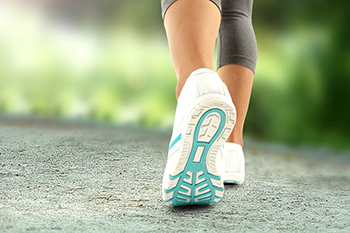
(616) 846-3400
Fax: (616) 846-3406

(616) 846-3400
Fax: (616) 846-3406

Walking and running shoes are designed with specific features to support each activity’s unique movements. Walking shoes are typically lighter and more flexible, with a lower heel-to-toe drop that promotes a smooth, natural stride. They are built to offer comfort and stability, as walking involves less impact on the feet. Running shoes are designed to handle the repetitive high-impact forces of running. These shoes usually have more cushioning, especially in the heel and forefoot areas, to absorb shock and protect joints. Running shoes also provide better arch support to accommodate the constant push-off and landing that occurs while running. Both types of shoes prioritize comfort, but walking shoes emphasize support and flexibility, while running shoes focus on cushioning and shock absorption. If you have sustained a foot injury while running, it is suggested that you contact a podiatrist who can treat various foot conditions and guide you on what type of running or walking shoes to wear.
For more information about walking shoes versus running shoes, consult with Dr. Robbi Young from Grand Haven Foot & Ankle. Our doctor can measure your feet to determine what your needs are and help you find an appropriate pair of footwear.
Foot Health: The Differences between Walking & Running Shoes
There are great ways to stay in shape: running and walking are two great exercises to a healthy lifestyle. It is important to know that running shoes and walking shoes are not interchangeable. There is a key difference on how the feet hit the ground when someone is running or walking. This is why one should be aware that a shoe is designed differently for each activity.
You may be asking yourself what the real differences are between walking and running shoes and the answers may shock you.
Differences
Walking doesn’t involve as much stress or impact on the feet as running does. However, this doesn’t mean that you should be any less prepared. When you’re walking, you land on your heels and have your foot roll forward. This rolling motion requires additional support to the feet.
Flexibility – Walking shoes are designed to have soft, flexible soles. This allows the walker to push off easily with each step.
If you have any questions, please feel free to contact our office located in Grand Haven, MI . We offer the newest diagnostic and treatment technologies for all your foot care needs.